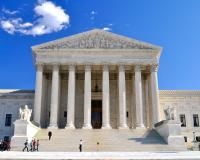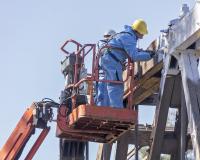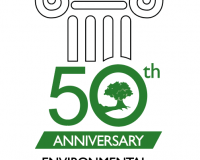
Vibrant Environment
Governance And Rule Of Law
All | Biodiversity | Climate Change and Sustainability | Environmental Justice | Governance and Rule of Law | Land Use and Natural Resources | Oceans and Coasts | Pollution Control

When it comes to the history of the environmental law and policy in the United States, the heroic stories most of us have heard concern men—John Muir, Aldo Leopold, Henry David Thoreau, Teddy Roosevelt, Gifford Pinchot, David Sive, David Brower, to name but a handful of the most famous. But we are less likely to know the achievements of the women who molded modern environmental policy despite having to clear hurdles seldom encountered by men.

Some months back, I received a visit from two leaders in the climate science and sustainable energy arena: the former president of Climate Central, Paul Hanle, and David van Hoogstraten, who had just left his position as director of federal environmental regulatory affairs at BP America.

The public health dangers posed by lead exposure have been recognized and documented since the mid-20th century. Despite the pervasiveness of lead-based paint in buildings, including homes and schools, experience has shown that laws can effectively address the issue by phasing out lead paint.

The New York Times reported on a conference of prominent lawyers to address the following question, “Do people have a constitutional right to freedom from air pollution and other environmental hazards and annoyances?”
What was an “unusual meeting” in the Times’s phrasing was held not last month but a half century ago at a rural conference center known as Airlie House just outside Warrenton, Virginia. The venerability of that clipping can be seen by the newspaper’s citing “the new field of ‘environmental law.’”

Greta Thunberg’s arrival in New York last month was highly publicized. So was her choice to travel via a “zero-emissions” yacht and her speech before the U.N. General Assembly. What many missed was that she also filed a complaint against five countries over their climate negligence during her visit. But before Greta, there was (is) Juliana (well, Kelsea). Kelsea Cascadia Rose Juliana is the leading plaintiff in Juliana v. United States, otherwise known as the Youth Climate Case. Supported by the nonprofit organization Our Children’s Trust, Juliana and 20 other youth plaintiffs sued the U.S. government in 2015 over its lack of action to combat climate change. Greta and Juliana’s cases are among a small but growing docket of climate-related litigation around the globe, cases that may become the Marbury v. Madison of climate case law.

In May 2020, the International Network for Environmental Compliance and Enforcement (INECE) will celebrate the 30th anniversary of its first international workshop that was held in Utrecht, Netherlands. In the 30 years since its foundation, we have witnessed an explosion in the development of environmental laws around the world. For example, according to the First Global Report on the Environmental Rule of Law, there has been a 38-fold increase in environmental legislation since 1972.

“For everything there is a season,” says the old Pete Seeger song, quoting the much older still book of Ecclesiastes. It seems that we are currently in the season of walls. The physical manifestation of this particular period may be the issue of the wall on our southern border. But there are other walls, and some of them have law as their concrete or steel.

On the first Earth Day in 1970, Sen. Edmund Muskie called for “A total strategy to protect the total environment.” At that time – and for several decades – the overarching approach was one of regulatory compliance, largely directed by government. But the next 50 years of environmental protection will not look like the first 50—they will be driven by technology as much as by regulation.

On August 27, the New York Supreme Court struck down the New York Household Cleansing Product Information Disclosure Program (HCPDIP), which requires manufacturers to list chemical ingredients of concern on their website. The court struck down the HCPDIP on the basis that the New York Department of Environmental Conservation (DEC) did not follow proper procedures under the State Administrative Procedures Act (SAPA). The court stated that though the department issued it as a "guidance," it was in fact a binding rule and did not follow the proper procedures in creating a formal law. The HCPDIP was declared "null and void" and remitted back to the DEC for compliance with the SAPA. In light of the court’s ruling, cleaning product manufacturers no longer have to comply with listing requirements by January 2020.

Our world is flooded with data, and the amount of data continues to increase exponentially. In a prior era, data primarily meant numbers. They were rather orderly, and they would typically be presented in a relatively structured way. That’s not the case today, however.
Data now are far more diverse and unstructured: words from a document that has been scanned into a computer; content of texts and tweets; website URLs; and photos and videos and more. And the continued generation of these data is what’s normal in our world today. If you’re a young adult, a student, or a child, this characterizes the world into which you were born, and it’s normal to you.